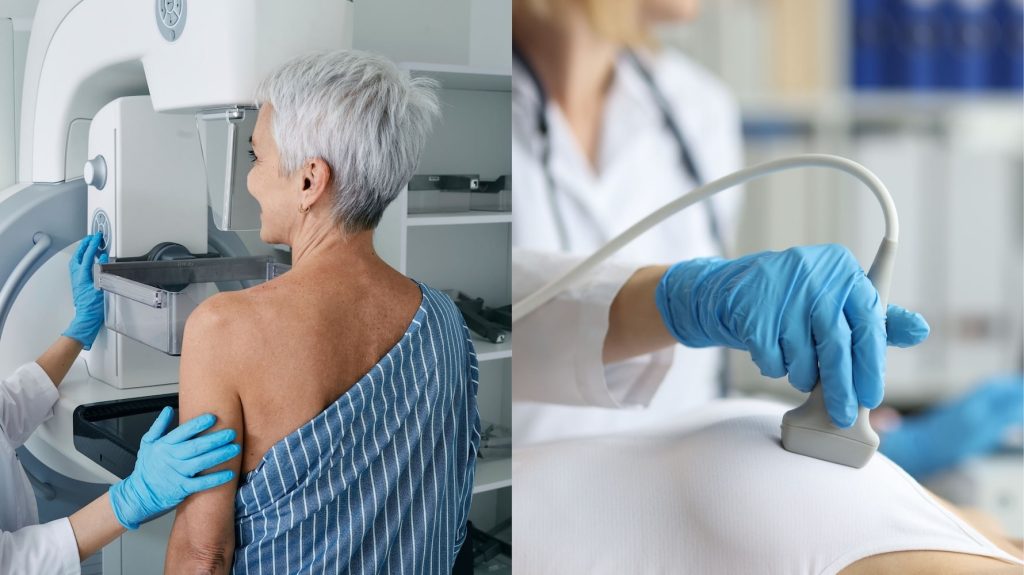Regular breast screening is an effective tool in the fight against breast cancer. But with multiple imaging options available, many women wonder which is right for them. Understanding the mammogram vs ultrasound comparison—and where other tools like MRI fit in—can help you take informed, proactive steps in protecting your health.
Each imaging method has its strengths and limitations. Choosing the right test depends on factors like your age, breast density and personal or family history of cancer. By understanding how these tools work together, you can work with your doctor to ensure timely and effective detection.
Understanding the Role of Mammograms
A mammogram is a recommended tool for routine breast cancer screening. It uses low-dose X-rays to detect changes in breast tissue, such as microcalcifications, which may signal early cancer. Mammograms are particularly useful for identifying cancers before they can be felt, making them ideal for population-based screening.
However, mammograms are less effective in women with dense breast tissue. Dense tissue appears white on a mammogram, just like potential tumours, which can make it harder to spot abnormalities. This is why doctors may recommend additional imaging for clearer evaluation.
Despite this limitation, mammograms remain the foundation of most programmes for breast screening in Singapore, especially for women over 40. They are quick, relatively affordable, and supported by national initiatives such as Screen for Life—a screening programme in Singapore—which may subsidise the cost.
When considering mammogram vs ultrasound, mammograms are often the first step, especially for those with dense breasts or inconclusive results.
How Ultrasound Supplements Breast Health Screening
Breast ultrasound uses sound waves to create images of the breast tissue. It is non-invasive, painless and does not involve radiation. For women under 40, or those with dense breasts, ultrasound is a useful tool to add clarity to mammogram results.
One of its biggest strengths is helping doctors determine whether a lump is a fluid-filled cyst or a solid mass. This makes it ideal for further investigation after a mammogram flags an area of concern.
However, ultrasound is not considered a standalone screening tool. It is typically used as a supplement rather than a replacement. When looking at the mammogram ultrasound difference, think of ultrasound as a tool that provides additional detail rather than the main screening method.
For those exploring mammogram vs ultrasound, it’s essential to know that ultrasound is often used reactively—to investigate specific findings—rather than proactively, as a routine screening method.
Breast MRI for High-Risk Cases
For women at higher risk of developing breast cancer—such as BRCA mutation carriers or those with a strong family history—a breast MRI may be recommended. MRI uses magnetic fields and contrast dye to capture detailed images.
When comparing breast MRI vs mammogram, MRI offers higher sensitivity, which means it can detect cancers that other tests might miss. However, this can also lead to more false positives, resulting in unnecessary stress or additional procedures.
MRI is often used when previous imaging results are inconclusive or for pre-surgical planning to assess the full extent of disease. It is not typically recommended for routine screening due to its high cost and limited availability in Singapore.
Still, it plays an important role in comprehensive breast care—especially for high-risk individuals. It complements other methods, providing a more complete picture when needed.
Which Test Is Right for You?
There’s no universal answer to the mammogram vs ultrasound debate. The right screening strategy depends on your individual risk profile.
Key factors include:
- Age: Mammograms are generally recommended from age 40, but those under 40 may benefit more from ultrasound
- Breast density: Dense tissue may limit mammogram effectiveness, making ultrasound or MRI more helpful
- Family history: Women with a strong family history of breast cancer may require more intensive screening like MRI
- Personal history: Previous breast conditions, surgeries or cancer history also influence your screening needs
To determine appropriate breast cancer screening approaches, speak with a qualified breast specialist. At Andrew Lee Breast Clinic, our team tailors screening plans to each patient’s unique needs and medical background..
The Benefits of Combining Mammogram and Ultrasound
In many cases, combining screening tools provides accurate results. For example, women with dense breasts may undergo both mammogram and ultrasound to ensure abnormalities aren’t missed. This approach balances the strengths of each method—mammogram for early detection and ultrasound for clearer differentiation.
For those with higher risk factors, MRI may be added to the mix. While costly, its detailed imaging can be life-saving when cancer is suspected or confirmed.
This personalised, layered approach is becoming more common in breast screening in Singapore, ensuring that each woman receives appropriate, effective care based on her specific circumstances.
Estimated Costs in Singapore
Understanding cost is a key part of planning your screening:
- Mammogram: Typically ranges from $100–$200, depending on the patient’s case and may be subsidised under national schemes like Screen for Life.
- Ultrasound: Usually costs $150–$300, depending on the patient’s condition and whether it is recommended as a follow-up or by a doctor.
- Breast MRI: Generally more costly at $1,000–$2,000, and is usually recommended for high-risk patients or based on specific clinical indications.
Prices vary by clinic and whether you’re in a public or private setting. Government subsidies and insurance may reduce out-of-pocket expenses, especially for eligible groups.
Always ask about costs, coverage and whether your imaging is doctor-referred—this can impact both price and urgency.
Optimising Breast Screening: Why Mammogram vs Ultrasound Matters for You
When it comes to mammograms vs ultrasound in Singapore, there’s no one-size-fits-all solution. Each screening tool serves a specific purpose, and the right approach depends on your risk profile, age and breast characteristics.
At Andrew Lee Breast Clinic, we believe in personalised care, guiding every woman through her breast health journey with clarity and confidence. From routine mammograms to imaging like MRI, we offer informed recommendations that prioritise your safety and peace of mind.
Speak with our team to determine the right breast screening method for your needs. Schedule your consultation today and take control of your breast health.







